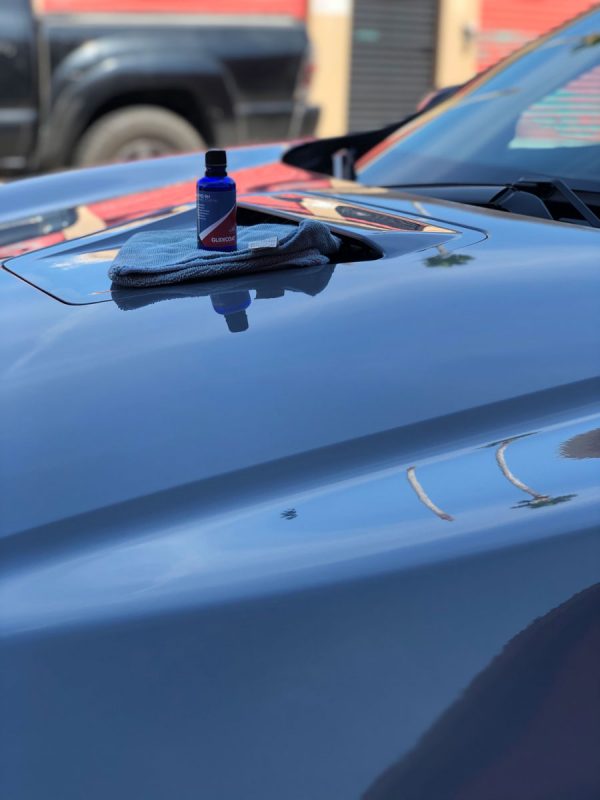Ceramic Coating vs. Sealants: Recognizing the Distinctions for Your Car
Ceramic Coating vs. Sealants: Recognizing the Distinctions for Your Car
Blog Article
The Relevance of Ceramic Coating: Securing Your Auto's Outside With Accuracy
In a period where preserving the functional and visual stability of your vehicle is paramount, ceramic covering emerges as a crucial option. With its one-of-a-kind bonding residential or commercial properties, ceramic covering uses a level of defense that much exceeds conventional waxing approaches.
Benefits of Ceramic Coating
When it comes to maintaining an auto's aesthetic allure, ceramic covering supplies considerable benefits. By forming a semi-permanent bond with the car's paint, ceramic finishes effectively prevent oxidation and fading, making certain that the cars and truck keeps a shiny, showroom-like surface for an extended duration.
Along with its protective qualities, ceramic coating supplies impressive hydrophobic residential or commercial properties, causing water and various other fluids to bead off effortlessly. This attribute simplifies the cleaning procedure, as dust and debris are much less likely to abide by the surface, decreasing the regularity and initiative required for upkeep. In addition, the finishing's resistance to chemical spots from acidic pollutants like bird droppings and tree sap is another significant advantage, lessening potential paint damage.
Ceramic finishings likewise enhance scrape resistance, offering a layer that can soak up minor abrasions and swirl marks. This quality is particularly valuable in maintaining an excellent surface, minimizing the possibility of noticeable imperfections and protecting the honesty of the cars and truck's paintwork over time.

How Ceramic Finish Works
Comprehending the mechanics behind ceramic coating reveals its efficacy as a safety remedy for vehicles. Ceramic coverings are essentially liquid polymer applications that chemically bond with a vehicle's factory paint, producing a safety layer.
Application of ceramic finishing involves a thorough process. This guard enhances the cars and truck's gloss and hydrophobic residential properties, helping with less complicated cleaning by creating water and contaminants to bead and slide off easily.
Moreover, the layer's molecular structure gives resistance to minor scratches and chemical discolorations. Unlike waxes or sealants that sit on top of the paint, ceramic coverings incorporate with the surface area, providing long-lasting defense. This combination is fundamental to its performance, making certain the automobile's coating remains excellent for years.
Contrasting Ceramic Coating to Alternatives
In the realm of automobile protection, ceramic finish stands as an awesome alternative when contrasted to traditional alternatives such as waxes and sealants. While waxes use a short-lived lustrous surface, commonly lasting only a couple of weeks to months, ceramic finishings give a longer-lasting solution, commonly enduring for years. This toughness is connected to the chemical bonding that takes place when ceramic coatings are applied, developing a strong layer that is immune to environmental risks.
Contrastingly, sealers, although more durable than waxes, still disappoint the robust security supplied by ceramic finishes. Sealants can generally last for approximately a year, supplying an artificial guard against particular components. They lack the premium hydrophobic residential properties and UV protection that ceramic coatings supply.
Furthermore, ceramic coatings supply improved scrape resistance, which neither waxes neither sealers can efficiently match. In summary, while traditional waxes and sealants supply fundamental defense, ceramic finishes provide a thorough, long-lasting solution that dramatically improves and preserves the lorry's exterior surface.
Application Refine Clarified
Using ceramic finish to a vehicle calls for a thorough procedure to make certain ideal results and toughness. The initial action entails thoroughly cleaning up the vehicle's surface to get rid of dust, oil, and previous waxes. This is crucial for making certain the finishing sticks appropriately. A pH-neutral shampoo and a clay bar treatment are frequently made use of to attain a pristine surface. When cleansed, the vehicle is dried out and polished to remove any flaws, as any kind of existing swirls or scratches can come to be extra noticable after the finish is used.
Following surface area preparation, the application of the ceramic layer starts. The layer is normally used in a climate-controlled atmosphere to avoid dust fragments from deciding on the freshly cleansed surface. Making use of an applicator pad, the ceramic coating is used in tiny areas to guarantee also insurance coverage. It is necessary to adhere to the manufacturer's guidelines pertaining to the appropriate treating time additional hints and application thickness.
After application, the covering requires a particular treating duration, throughout which the car must be protected from water and pollutants. This healing procedure can differ depending upon the item yet find more usually ranges from 24 to 48 hours. Inevitably, this in-depth procedure is essential in attaining a glossy and resilient finish.
Maintenance Tips for Long Life
To maintain the long life of a ceramic coating, adherence to a disciplined maintenance routine is necessary. Normal cleaning is vital; utilize a pH-neutral vehicle shampoo and soft microfiber gloves to stay clear of abrasions. Stay clear of automatic car cleans, as their extreme brushes can jeopardize the covering's integrity. Rather, go with a hand clean to guarantee detailed yet gentle cleansing.
Post-wash, drying the automobile with a tidy microfiber towel stops water areas that might degrade the layer gradually. Furthermore, apply a ceramic coating booster every couple of months. These boosters reinforce the hydrophobic buildings and enhance the finishing's protective capacities, guaranteeing it remains effective against contaminants.
Keep in mind that vehicle parking locations play a vital role in maintenance. ceramic coating. Whenever feasible, park in shaded areas to decrease UV exposure, which can slowly weaken the covering. For long-term storage space, consider making use of an auto cover for included security against ecological components
Final Thought
In conclusion, ceramic finish serves as a critical protective layer for car exteriors, offering durable defense against ecological aspects such as dirt, grime, and UV rays. Understanding the application process and sticking to maintenance referrals are necessary for maximizing the durability and performance of ceramic coating.
When it comes to preserving a car's aesthetic allure, ceramic covering supplies significant benefits. By forming a semi-permanent bond with the automobile's paint, ceramic layers effectively prevent oxidation and fading, ensuring that i loved this the cars and truck preserves a shiny, showroom-like coating for a prolonged duration. Ceramic finishes are essentially fluid polymer applications that chemically bond with an automobile's manufacturing facility paint, creating a protective layer. In recap, while standard waxes and sealants provide basic protection, ceramic finishes provide a detailed, long-lasting solution that substantially protects the car and boosts's exterior finish.

Report this page